The automotive sector constantly evolves, with manufacturers introducing cutting-edge technology and design to meet modern driver expectations. In this analysis, we'll be comparing two popular contenders in the compact SUV segment: the Opel Grandland and the Peugeot 3008. Both models deliver an impressive mix of performance, fuel efficiency, and innovative features, making them strong competitors. Let's dive into the technical aspects and innovations that set these cars apart.
Vauxhall Grandland vs Peugeot 3008 – Which model is better for everyday use?
Both models have their strengths – but which one suits you more?
Compare performance, efficiency, price and space directly: Vauxhall Grandland or Peugeot 3008?
Performance and Powertrains
Both the Opel Grandland and Peugeot 3008 offer a range of powertrains designed to cater to different driving preferences. The Grandland comes equipped with petrol MHEV, plug-in hybrid, and fully electric options, producing between 136 to 213 horsepower. In comparison, the Peugeot 3008 also offers a similar lineup, with power outputs ranging from 136 to an impressive 231 horsepower, particularly at the higher performance trim level.
When it comes to acceleration, both vehicles perform well, with the Grandland achieving 0-100 km/h in as low as 7.8 seconds, while the 3008 offers slightly quicker options at just 8.4 seconds for its most potent variants. While both SUVs offer front-wheel drive layouts, the Grandland features a maximum torque of 350 Nm for its higher trims, while the Peugeot matches this with 345 Nm.
Fuel Efficiency and Emissions
Fuel efficiency is crucial for modern drivers, and both models deliver commendable performance. The Opel Grandland's fuel consumption ranges from 6.4 L/100km for petrol to a mere 0.8 L/100km for its hybrid variants, while the electric models boast zero emissions. On the other hand, the Peugeot 3008 slightly excels in petrol consumption with an impressive efficiency of 5.7 L/100 km, demonstrating its commitment to sustainability.
In terms of CO2 emissions, the Grandland's hybrid versions exhibit outstanding figures ranging from just 19 g/km for its electric variant compared to the 3008's best 19 g/km. Both vehicles are marked with an A grade on the CO2 efficiency class scale, showing their dedication to reducing environmental impact.
Exterior Dimensions and Design
Both SUVs stand out with their distinct design philosophies. The Opel Grandland measures 4650 mm in length, 1934 mm in width, and 1665 mm in height, giving it an imposing presence on the road. In contrast, the Peugeot 3008 is slightly smaller, at 4542 mm in length and 1895 mm in width, but maintains a stylish and sporty silhouette.
The Grandland's spacious design translates into a generous trunk capacity of 550 liters, making it a strong choice for families or those requiring additional storage. The 3008 offers a slightly smaller trunk space at 520 liters, yet its beautifully crafted interior rich in premium materials compensates for the difference, providing a luxurious feel.
Interior Features and Technology
Both the Opel Grandland and Peugeot 3008 have packed their interiors with modern technology. The Grandland boasts ergonomically designed seats and an intuitive touchscreen infotainment system, providing seamless connectivity with options like Apple CarPlay and Android Auto. On the other hand, the 3008 offers an impressive i-Cockpit layout that features a compact steering wheel paired with a digital instrument panel, elevating the driving experience through its futuristic feel.
Safety also plays a crucial role in these models. Both SUVs are equipped with advanced safety features such as adaptive cruise control, lane-keeping assist, and automatic emergency braking, ensuring peace of mind for drivers and passengers alike.
Final Thoughts
As we draw our comparison between the Opel Grandland and the Peugeot 3008, it's clear that both vehicles shine in their respective areas. The Grandland offers superior trunk space and a slightly more powerful hybrid variant, while the 3008 impresses with its design, fuel efficiency, and innovative interior technology. Ultimately, choosing between these two will depend on personal preferences regarding style, space, and driving dynamics. As both models continue to reflect the industry’s shift towards electrification and sustainability, they stand as solid choices in the compact SUV market of 2024.
Here’s where it gets real: The technical differences in detail
Costs and Efficiency:
Price and efficiency are often the first things buyers look at. Here it becomes clear which model has the long-term edge – whether at the pump, the plug, or in purchase price.
Vauxhall Grandland has a hardly perceptible advantage in terms of price – it starts at 32600 £, while the Peugeot 3008 costs 35100 £. That’s a price difference of around 2580 £.
Fuel consumption also shows a difference: Peugeot 3008 manages with 2.40 L and is therefore slight more efficient than the Vauxhall Grandland with 2.60 L. The difference is about 0.20 L per 100 km.
In terms of energy consumption, the advantage goes to the Peugeot 3008: with 16.90 kWh per 100 km, it’s hardly perceptible more efficient than the Vauxhall Grandland with 17.80 kWh. That’s a difference of about 0.90 kWh.
As for range, the Peugeot 3008 performs minimal better – achieving up to 698 km, about 4 km more than the Vauxhall Grandland.
Engine and Performance:
Under the bonnet, it becomes clear which model is tuned for sportiness and which one takes the lead when you hit the accelerator.
Both models deliver identical power – 325 HP each.
In acceleration from 0 to 100 km/h, the Peugeot 3008 is minimal quicker – completing the sprint in 6 s, while the Vauxhall Grandland takes 6.10 s. That’s about 0.10 s faster.
There’s no difference in top speed – both reach 220 km/h.
There’s also a difference in torque: Peugeot 3008 pulls slight stronger with 511 Nm compared to 509 Nm. That’s about 2 Nm difference.
Space and Everyday Use:
Beyond pure performance, interior space and usability matter most in daily life. This is where you see which car is more practical and versatile.
Both vehicles offer seating for 5 people.
In curb weight, Peugeot 3008 is slight lighter – 1648 kg compared to 1675 kg. The difference is around 27 kg.
In terms of boot space, the Vauxhall Grandland offers minimal more room – 550 L compared to 520 L. That’s a difference of about 30 L.
In maximum load capacity, the Vauxhall Grandland performs somewhat better – up to 1645 L, which is about 165 L more than the Peugeot 3008.
When it comes to payload, Vauxhall Grandland hardly perceptible takes the win – 495 kg compared to 467 kg. That’s a difference of about 28 kg.
Who comes out on top?
Overall, the Vauxhall Grandland shows itself to be barely ahead and secures the title of DriveDuel Champion.
It convinces with the more balanced overall package and proves to be the more versatile choice for everyday use.
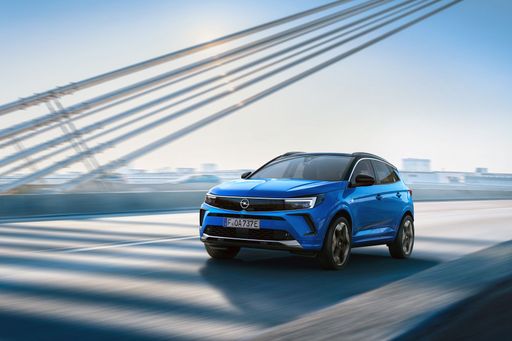 @ Opel / Stellantis Media
@ Opel / Stellantis Media
Vauxhall Grandland
Vauxhall Grandland
The Opel Grandland feels like a sensible, well-rounded SUV — neat styling, a spacious cabin and a composed ride that turns daily driving into a quietly pleasant experience. It’s a smart choice for buyers who want modern tech, good economy and a dash of German practicality without shouting for attention.
details @ Opel / Stellantis Media
@ Opel / Stellantis Media
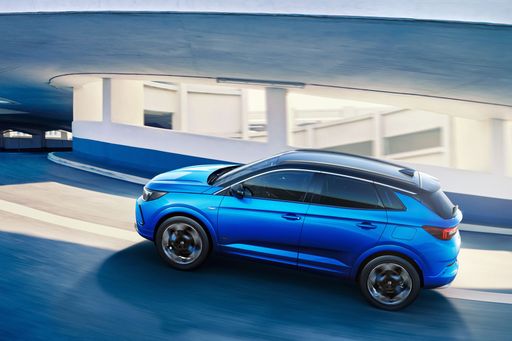 @ Opel / Stellantis Media
@ Opel / Stellantis Media
 @ Opel / Stellantis Media
@ Opel / Stellantis Media
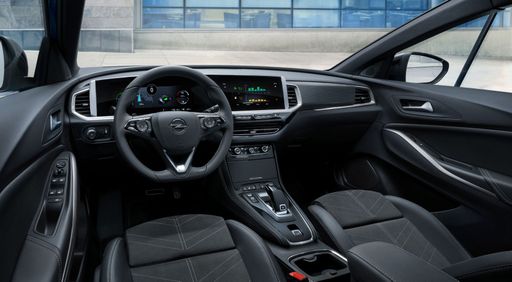 @ Opel / Stellantis Media
@ Opel / Stellantis Media
Peugeot 3008
The Peugeot 3008 blends bold French styling with a surprisingly grown-up interior that makes even dull commutes feel a little bit special. Practical enough for family life yet lively to drive, it’s a clever all‑rounder that stands out from the crossover crowd without shouting for attention.
details @ Peugeot / Stellantis Media
@ Peugeot / Stellantis Media
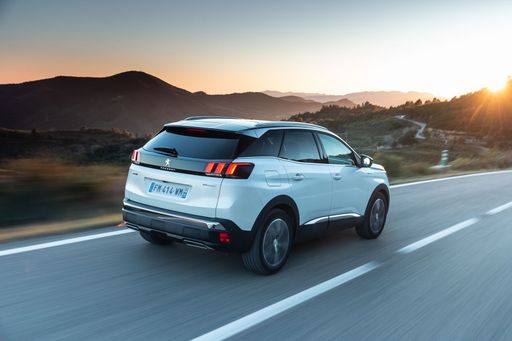 @ Peugeot / Stellantis Media
@ Peugeot / Stellantis Media
 @ Peugeot / Stellantis Media
@ Peugeot / Stellantis Media
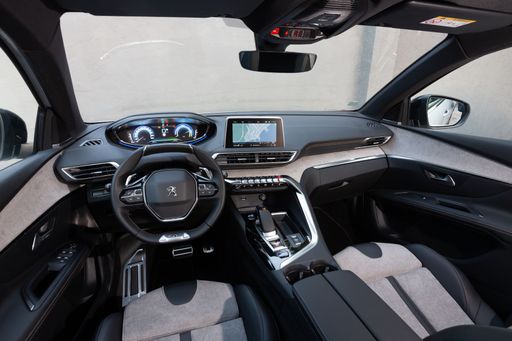 @ Peugeot / Stellantis Media
@ Peugeot / Stellantis Media
 @ Opel / Stellantis Media
@ Opel / Stellantis Media
|
 @ Peugeot / Stellantis Media
@ Peugeot / Stellantis Media
|
|
|
|
Costs and Consumption |
|
|---|---|
|
Price
32600 - 51400 £
|
Price
35100 - 52000 £
|
|
Consumption L/100km
2.6 - 5.6 L
|
Consumption L/100km
2.4 - 5.4 L
|
|
Consumption kWh/100km
17.8 - 18.6 kWh
|
Consumption kWh/100km
16.9 - 17.6 kWh
|
|
Electric Range
82 - 694 km
|
Electric Range
81 - 698 km
|
|
Battery Capacity
-
|
Battery Capacity
0.4 - 96.9 kWh
|
|
co2
0 - 126 g/km
|
co2
0 - 121 g/km
|
|
Fuel tank capacity
55 L
|
Fuel tank capacity
55 L
|
Dimensions and Body |
|
|---|---|
|
Body Type
SUV
|
Body Type
SUV
|
|
Seats
5
|
Seats
5
|
|
Doors
5
|
Doors
5
|
|
Curb weight
1675 - 2325 kg
|
Curb weight
1648 - 2266 kg
|
|
Trunk capacity
485 - 550 L
|
Trunk capacity
470 - 520 L
|
|
Length
4650 mm
|
Length
4542 mm
|
|
Width
1905 - 1934 mm
|
Width
1895 mm
|
|
Height
1665 mm
|
Height
1641 mm
|
|
Max trunk capacity
1580 - 1645 L
|
Max trunk capacity
1430 - 1480 L
|
|
Payload
425 - 495 kg
|
Payload
432 - 467 kg
|
Engine and Performance |
|
|---|---|
|
Engine Type
Electric, Petrol MHEV, Plugin Hybrid
|
Engine Type
Electric, Petrol MHEV, Plugin Hybrid
|
|
Transmission
Automatic
|
Transmission
Automatic
|
|
Transmission Detail
Reduction Gearbox, Dual-Clutch Automatic
|
Transmission Detail
Reduction Gearbox, Dual-Clutch Automatic
|
|
Drive Type
Front-Wheel Drive, All-Wheel Drive
|
Drive Type
Front-Wheel Drive, All-Wheel Drive
|
|
Power HP
145 - 325 HP
|
Power HP
145 - 325 HP
|
|
Acceleration 0-100km/h
6.1 - 10.2 s
|
Acceleration 0-100km/h
6 - 10.2 s
|
|
Max Speed
170 - 220 km/h
|
Max Speed
170 - 220 km/h
|
|
Torque
230 - 509 Nm
|
Torque
230 - 511 Nm
|
|
Number of Cylinders
3 - 4
|
Number of Cylinders
3 - 4
|
|
Power kW
107 - 239 kW
|
Power kW
107 - 239 kW
|
|
Engine capacity
1199 - 1598 cm3
|
Engine capacity
1199 - 1598 cm3
|
General |
|
|---|---|
|
Model Year
2024 - 2025
|
Model Year
2024 - 2025
|
|
CO2 Efficiency Class
A, D, B
|
CO2 Efficiency Class
A, D, B
|
|
Brand
Vauxhall
|
Brand
Peugeot
|
Is the Vauxhall Grandland offered with different drivetrains?
Available configurations include Front-Wheel Drive or All-Wheel Drive.
The prices and data displayed are estimates based on German list prices and may vary by country. This information is not legally binding.
